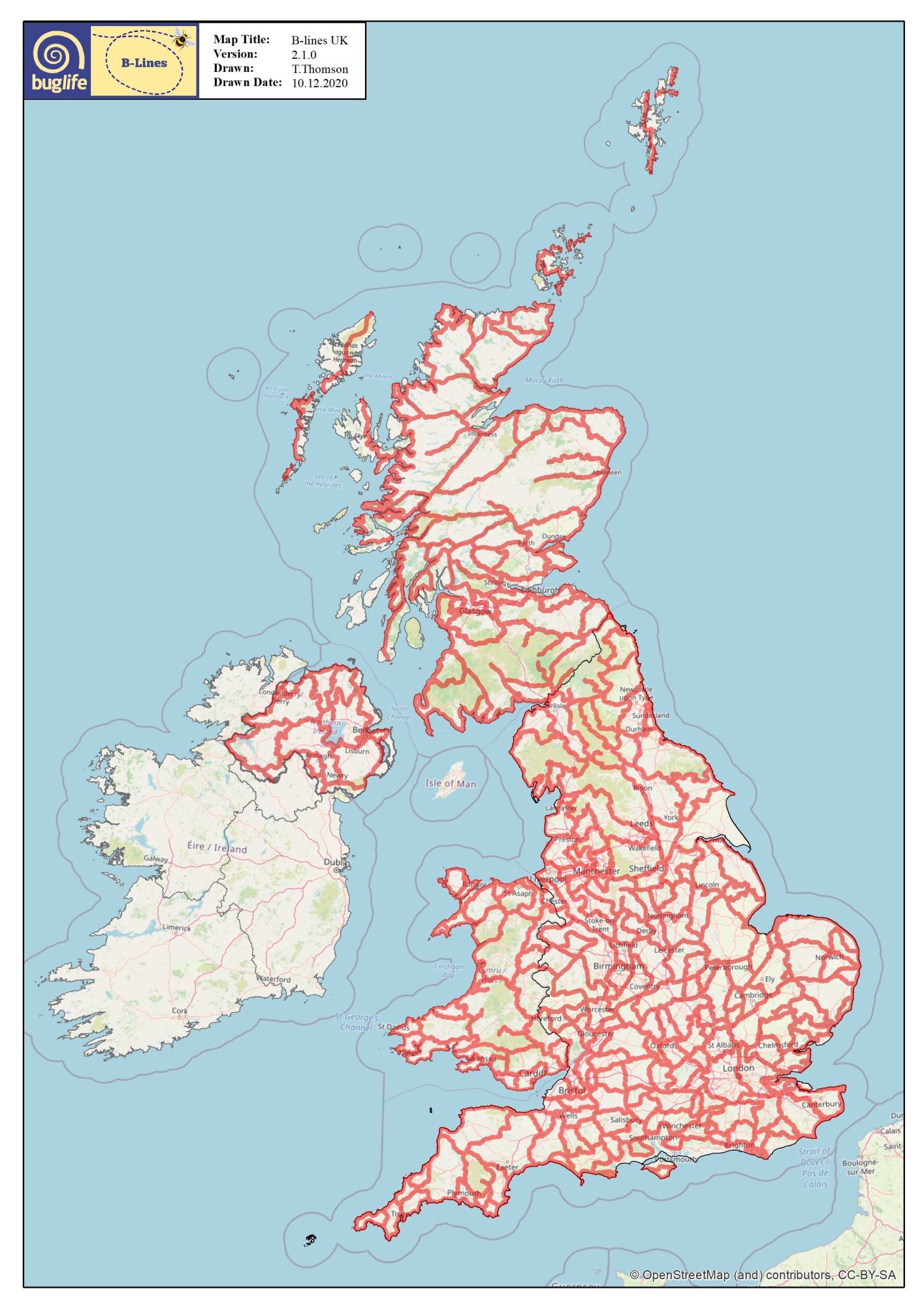Our story
B-Lines is a network of insect pathways connecting the best remaining wildflower-rich habitats across the country. It supports the recovery of threatened species, helping to restore the abundant insect populations that once flourished across the UK.
Imagine trying to travel around Britain without our road and rail network. Or imagine if nine out of every ten miles of road just didn't exist – life would be impossible!
Our nature has become fragmented by development and urbanisation. Where pockets of green space remain, they are often badly connected and wildlife can have a really hard time getting to the right places to find food, mates and a place to live. That's where B-Lines come in: our imaginative and beautiful solution.
Buglife has led the development of the B-Lines map, alongside the creation of over 1,500 hectares of wildflower habitat for pollinators to travel through. The B-Lines map, launched by Buglife in March 2021, has been developed over the past ten years through collaboration with many partners and stakeholders. It uses a range of national and regional datasets to show pollinator "dispersal pathways" - the areas where there is enough habitat for pollinators to travel between areas.
The map is a fantastic way for communities and organisations to see clearly where the challenges arise, and pinpoint where we can all make a difference. This could be in your back garden, on your balcony, a community centre roof, local parks and green space, a workplace smoking area or at the border of agricultural land.
Recreating a pollinator highway system brings a lot of benefits: bringing nature to people; giving everyone the opportunity to be a part of nature's recovery; helping to conserve our pollinators; contributing to national biodiversity targets; increasing pollinators, and the benefits they bring to farming through 'ecosystem services'.
B-Lines are designed to help pollinators, but they help all kinds of other wildlife, too. Whether you're a farmer, forester, local community group or business you can get involved and help to reconnect our landscape. The map is available to everyone, and every bit of habitat helps our pollinators. Even if you're not on a B-line highway, your help is needed and we have lots of advice on the Buglife website.
If you have been hard at work to create homes and highways for our pollinators and bees, please let us know by adding your project to the B-Lines map.
Our advice
Pollinators need everyone to work together. It has taken hundreds of stakeholders and partners to create the B-Lines map. This not only includes expertise and skills of leading experts on pollinators and mapping software, but commitment and action by local people across the UK.
We can better understand things when we can clearly see the results. Our B-Lines map is an incredible visual resource, allowing anyone, anywhere to see how their action can connect to the map and help our pollinators. It's inspiring to see the projects involved, and motivating for us all to do what we can to join in.
Our metrics
Number of projects connected to the B-Lines map. Additional pollinator projects outside of the B-Lines highways. Increased pollinator biodiversity along B-Lines. Landscape connectivity.







